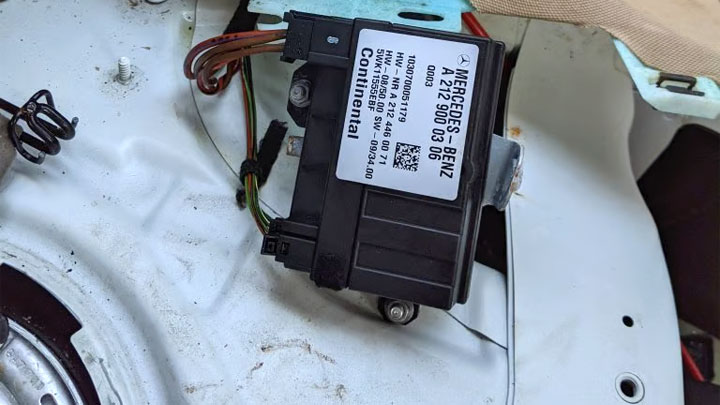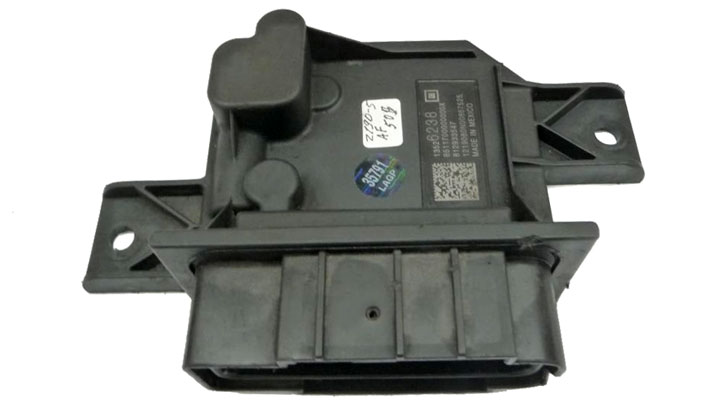6 Symptoms of a Bad Fuel Pump Control Module (and Replacement Cost)
Engine stalling, poor performance, and other issues could signal fuel pump control module failure. This integral component manages the fuel pump, so malfunctions can cause serious issues.
Don’t ignore the symptoms of a failing module, which require prompt diagnosis and repair. This guide covers common signs of a bad fuel pump control module and how much it’s going to cost to replace it.

See Also: 5 Symptoms of a Bad Fuel Pump Relay
Bad Fuel Pump Control Module Symptoms
The failure of a vehicle’s fuel pump control module is often accompanied by a host of secondary symptoms, some of which can wreak havoc on a vehicle’s driveability. Recognizing these symptoms can prove valuable when attempting to expedite the matters of diagnosis and repair.
The following are several of the most common symptoms associated with fuel pump control module failure.
#1 – Rough Idle

The impending failure of a vehicle’s fuel pump control module is often foreshadowed by the sudden onset of a rough or erratic idle. This occurs when the fuel pump control module proves incapable of demanding correct fuel delivery for the operating demands of the moment.
#2 – Hesitation or Loss of Power
One might also notice a defined hesitation while attempting to accelerate when their vehicle’s fuel pump control module is on the fritz. Again, this lagging, or general loss of power is caused by the inability of the failing fuel pump control module to demand adequate fuel delivery of the fuel pump.
#3 – Stalling

In severe cases, a vehicle might stall when saddled with a faulty or inoperable fuel pump control module.
This occurs when the module itself is stuck in a state of low demand, whereby it cannot command sufficient fuel delivery, or the module goes offline in its entirety. In either case, a stall is quite likely.
#4 – Crank/No Start
More often than not, the failure of a fuel pump control module will eventually lead to a no-start condition, wherein a vehicle’s engine will crank, but will refuse to start.
This generally occurs when a fuel pump control module completely fails, providing no command for fuel pump operation. As such, no fuel is present at the fuel rail for combustion.
#5 – Increased Fuel Consumption

Under certain circumstances, it is possible for a vehicle’s fuel pump control module to fail in a way that causes too much fuel to be dosed to the fuel rail at any one given time.
This, in turn, can lead to a noticeable decrease in fuel economy, and more frequent visits to the gas station. Additionally, you might notice a darkening of your vehicle’s exhaust output as well.
#6 – Potential Check Engine Light
In many instances, the impending failure of a vehicle’s fuel pump control module will lead to the illumination of a check engine light. This occurs when a vehicle’s ECM stores one or more fuel system related diagnostic fault codes (ie: P0087 for low fuel pressure).
However, it is worth mentioning that a failure of this type does not lead to the illumination of a check engine light in every case, and is largely dependent on the specific make and model of vehicle.
What Does a Fuel Pump Control Module Do?
A vehicle’s fuel pump control module (aka: fuel pump driver module) regulates the amount of voltage distributed to the fuel pump itself, in accordance with fuel demands under various conditions and circumstances.
In turn, optimal fuel delivery to the fuel rail is ensured, thereby making efficient combustion possible, and allowing an engine to produce output as desired.
The fuel pump control module receives commands from a vehicle’s ECM/PCM. The ECM monitors fuel rail pressures during engine operation, thereby demanding increased or decreased fuel pump output. These needs are conveyed to the fuel pump control module, where they are deciphered into a defined pump inlet voltage.
Where Is It Located?
The location of a vehicle’s fuel pump control module often varies significantly from one model to the next.
In some vehicles, especially those of a GM make, the fuel pump control module can be found mounted to the crossmember directly above the spare tire. On other vehicles, the fuel pump control module can be found beneath the passenger seat, or alternatively, within the engine bay.
In recent years, manufacturers have made a defined push to relocate their vehicles’ fuel pump control modules to alternate locations, closer to their corresponding fuel pumps. In some cases, these modules have even been moved to on top of the fuel tank itself, or have been integrated into the fuel pump in a unitized fashion.
What Causes a Fuel Pump Module to Fail?

A fuel pump control module can fail for one of several different reasons, some of which tend to be more common than others.
Typically, a fuel pump control module ultimately succumbs to the effects of overheating and vibration. Modules of this type are often mounted to a vehicle’s frame or underbody, where vibration is readily felt, and airflow is somewhat limited.
Additionally, with time, a fuel pump control module can begin to experience water intrusion as near-continuous exposure to moisture begins rusting away the module’s shell. Once water intrudes, it is only a matter of time before a fuel pump control module’s delicate electrical circuits are damaged.
Problems of this nature are especially prevalent in the North, where heavy road salt use is common and coastal areas.
Fuel Pump Control Module Replacement Cost
Best places to order parts? See: 19 Best Online Auto Parts Stores

The exact cost associated with fuel pump control module replacement can differ considerably from one model of vehicle to the next. This stems from the fact that there are significant variances in control module costs between the numerous models of vehicles on the road today.
Additionally, the time required to replace this module also varies on a case-by-case basis, thereby impacting labor costs.
Despite this, one can generally expect to pay somewhere in the neighborhood of $350 to $1,100 to have their vehicle’s fuel pump control module replaced.
Luckily, the average cost of replacement falls toward the lower half of this range, coming in at around $500. Higher repair costs come into play when the cost of the control module itself is exceedingly high, or when additional programming is required.
- 5 Symptoms of an EVAP Leak (and Repair Cost) - Apr 27, 2024
- P0480 Code (Symptoms, Causes, and How to Fix) - Apr 19, 2024
- Car Temperature Gauge Stopped Working? (Here’s Why) - Apr 15, 2024
